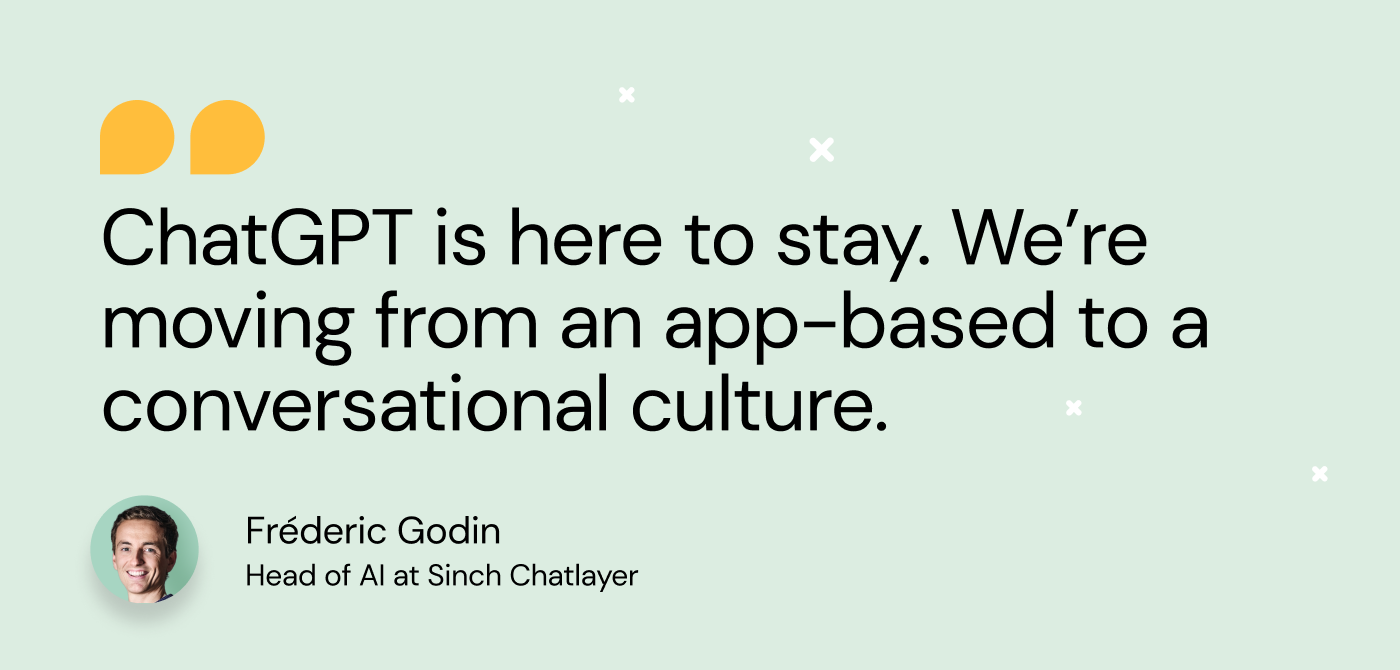Insights
What is ChatGPT and how can businesses use the technology safely?
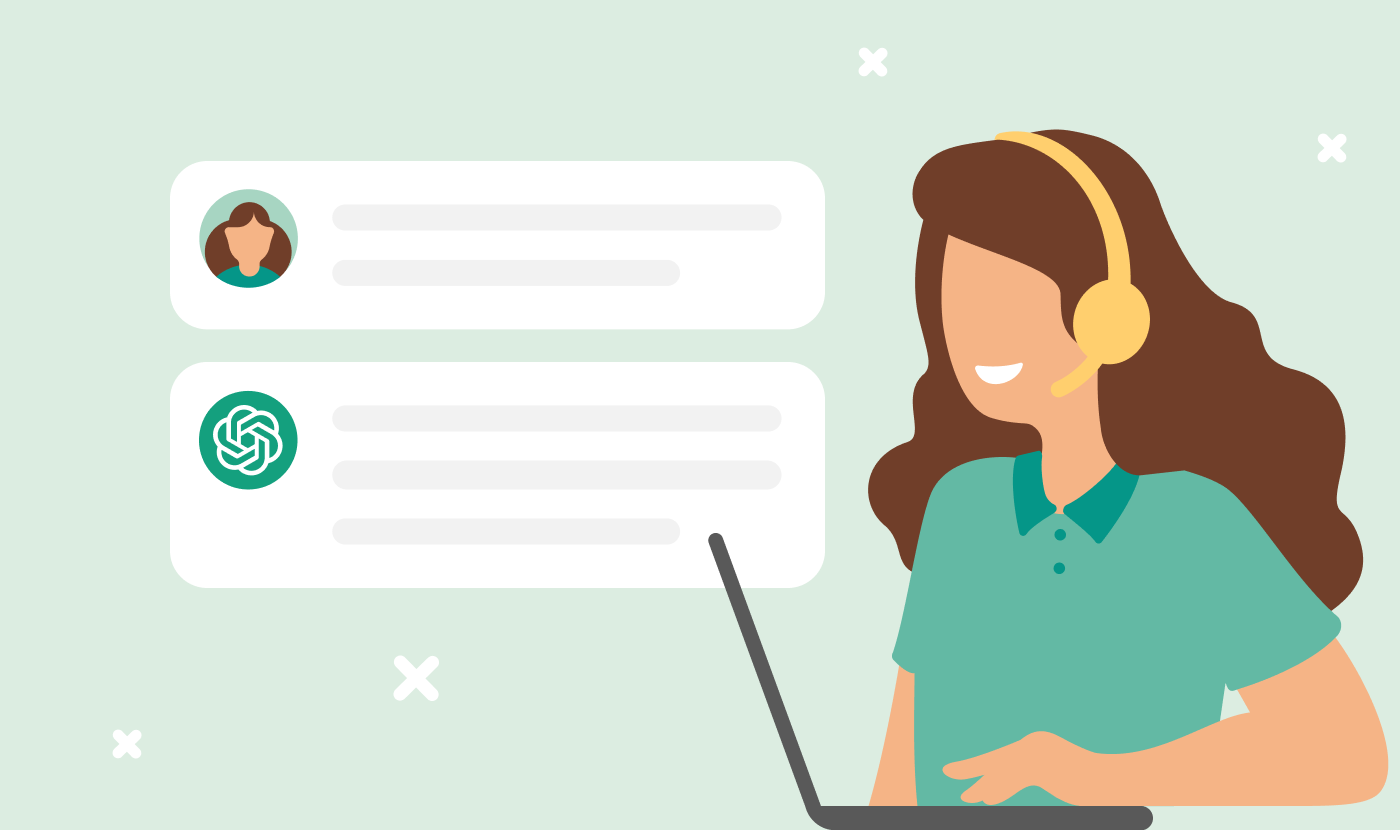
Insights

The Lunar calendar may say that it’s the rabbit’s or cat’s time, but 2023 is turning out to be the year of ChatGPT. Experts and the general public alike are fascinated by OpenAI’s language model, and some have already called it AI’s “iPhone moment”. So, what exactly is ChatGPT? Is the hype around it justified? And can businesses use this powerful tool as well? Let’s take a closer look.
ChatGPT is the name of OpenAI’s latest generative pre-trained transformer (GPT) AI model. With its training, it can follow conversational instructions to access information online and, with the help of a supercomputer, generate text-based answers.
Simply put, ChatGPT is a personal assistant that helps you, in a conversational way, to execute tasks.
For Fréderic Godin, Head of AI at Sinch Chatlayer, ChatGPT is a very impressive AI model.
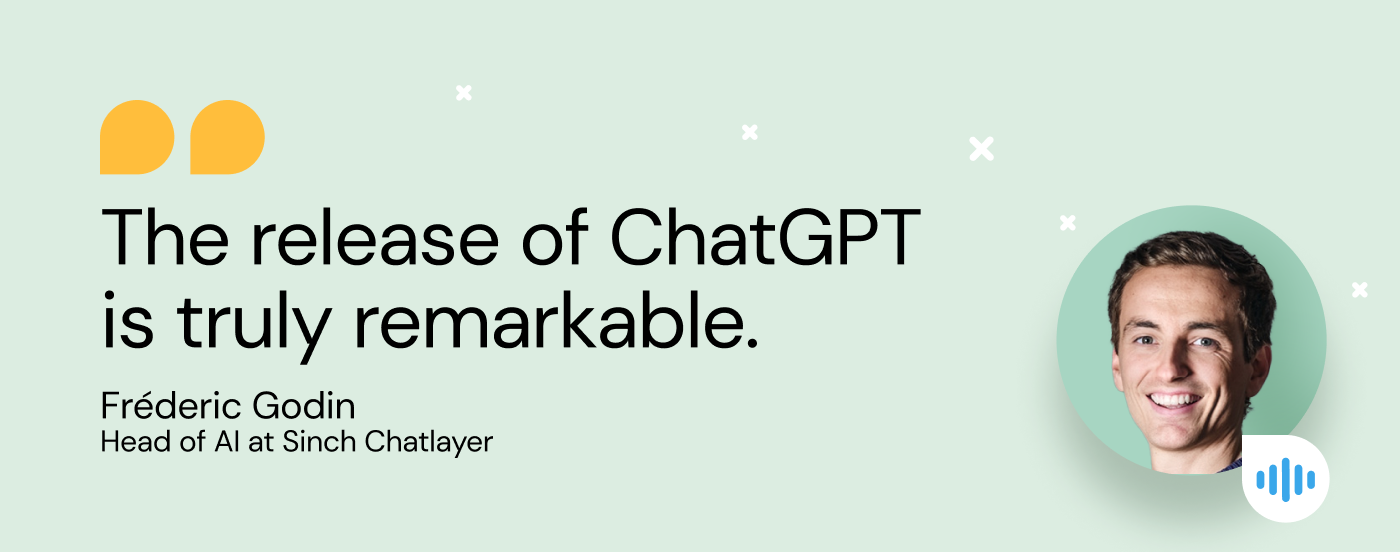
What makes ChatGPT so exciting is that it’s smooth and user-friendly. Everybody can try it! That’s why some have likened it to the iPhone’s launch. Even though smartphones already existed, it was the release of the iPhone that made the technology more accessible to the larger public.
Similarly, ChatGPT is neither the first nor the biggest GPT model out there. However, it’s the first one that can follow conversational instructions given by regular users (as opposed to programming commands), and not only complete the tasks very well but also respond in an engaging way. That’s what makes everyone so excited about the AI model.
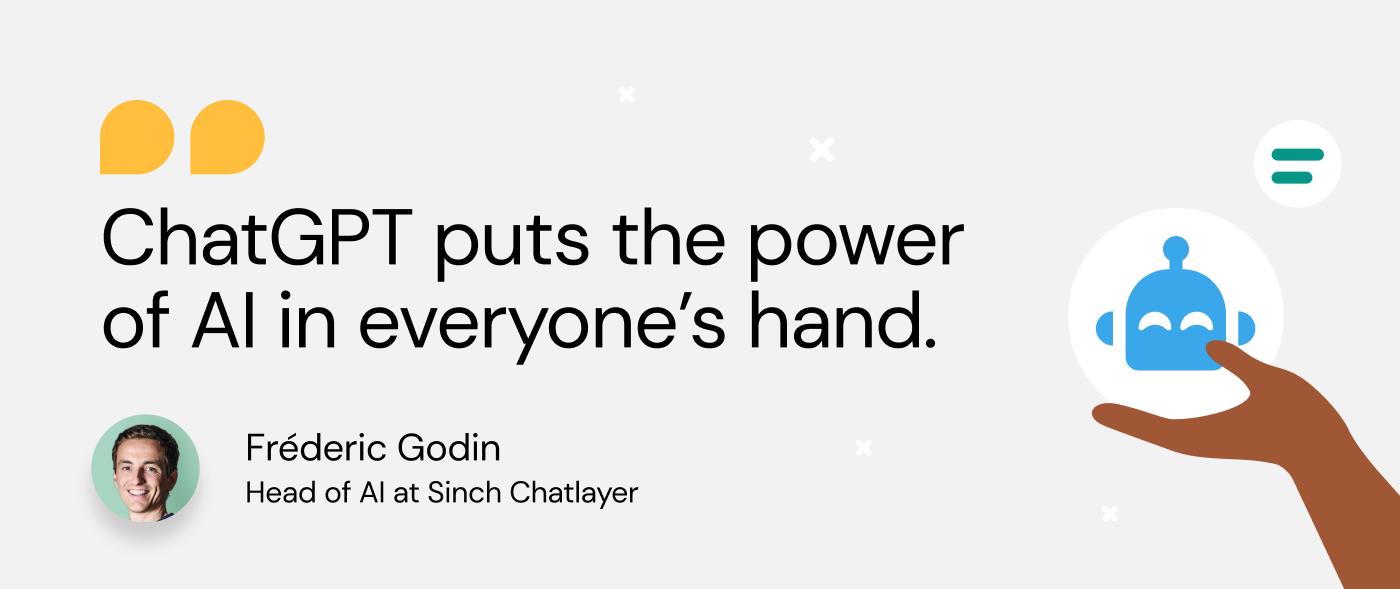
For more information on the history and the technology behind GPT, check out this webinar by Fréderic Godin.
Well, yes and no.
On the one hand, ChatGPT has brought conversational AI to the masses and made it fun and user-friendly. It’s one of the best text-based bot experiences ever created that really showcases the potential of AI-based chatbots to everyone.
On the other hand, it’s important to understand that ChatGPT isn’t magic. It’s a language model that is very good at predicting and creating text, but its knowledge is limited.
For example, if you ask what the capital of France is, ChatGPT will probably come up with Paris as the most likely answer.
However, the AI doesn’t really know anything about France or the capitals of the world. It simply learned by reading a large set of documents, such as web pages and books. It’s done so in an impressive and very user-friendly way, for sure, but not as an understanding AI that can abstract information. That’s also why ChatGPT can give a lot of incorrect answers, too, depending on the question and information it works with.
ChatGPT is a promising new technology with a lot of potential, as long as you’re aware of its limitations.
With all this buzz around ChatGPT, it’s only natural that companies are looking at ways to use the technology as well.
As a conversational technology, the text-based language model could, in some cases, be a helpful addition for businesses.
For example, you could integrate ChatGPT in your help center. For example, agents could type a quick reply, such as “Anything else?” into the chat, and run it through a language model to enhance their response to “Is there anything else I can help you with?” This would save customer agents time, while still providing a smooth customer experience.
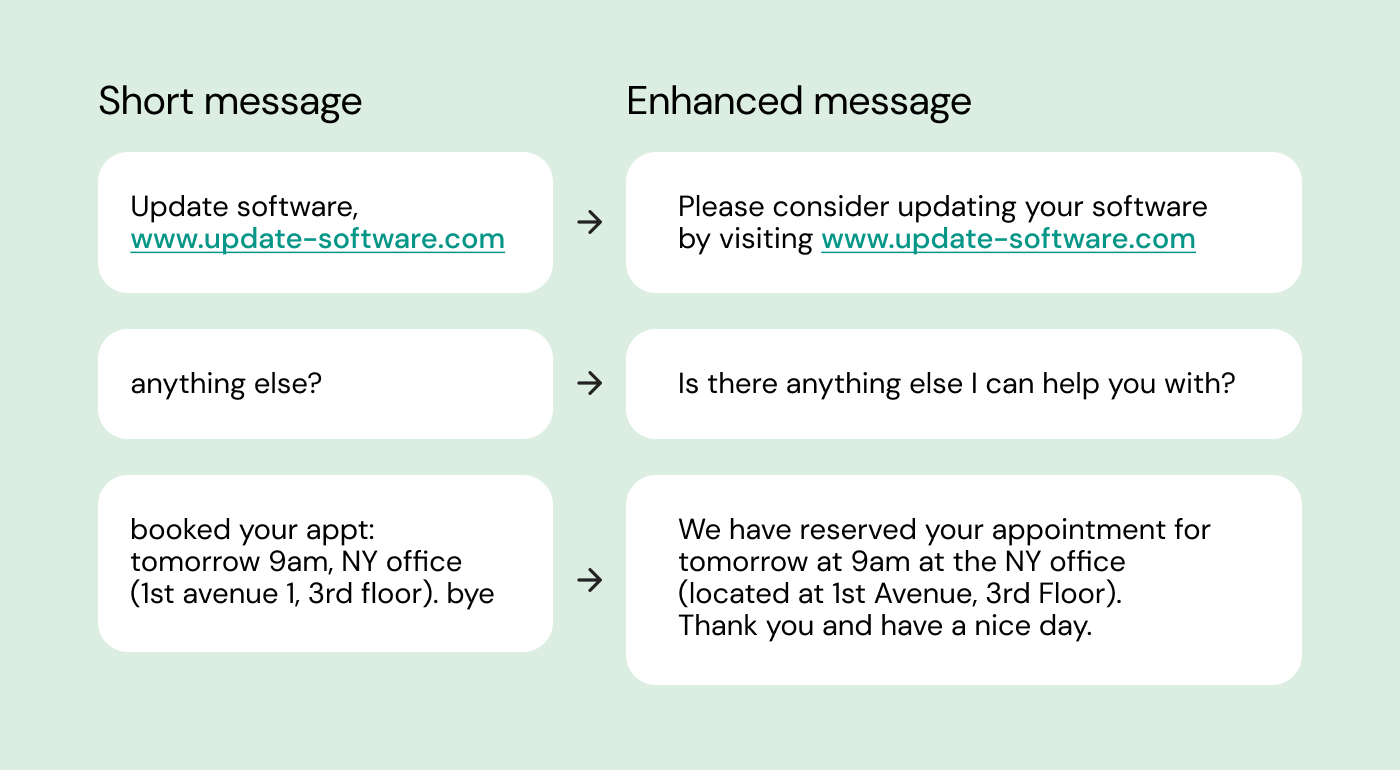
Content marketing is another interesting business use case for ChatGPT, as it can help marketers come up with creative copy faster.
And ChatGPT can also help IT teams. Developers can work with the AI to improve their code, and conversation designers could use its language capabilities to better train chatbots.
However, while there are definitely new and exciting opportunities for businesses with ChatGPT, there are also risks, and it’s important to understand them before implementing it into your company’s operations.
One issue with ChatGPT is that it doesn’t use real-time data (yet). It only has access to data up to the year 2021, so it won’t be able to relay newer information.
In addition, ChatGPT doesn’t have a built-in “I don’t know” feature like most chatbots. This means that it’ll always come up with the answer it deems most plausible, regardless of whether it’s factual or not. And your customers won’t even be aware of this.
For example, if a customer asks ChatGPT for your business address, and ChatGPT can’t find this information, it’ll give the most plausible answer. This could be a default address, such as 123 Main Street, Anytown, US — which is frustrating for customers and can leave a negative impression of your business.
This could harm your company’s image, and even have legal consequences, depending on the circumstances. That’s why you want to be very careful when using ChatGPT in a business context.
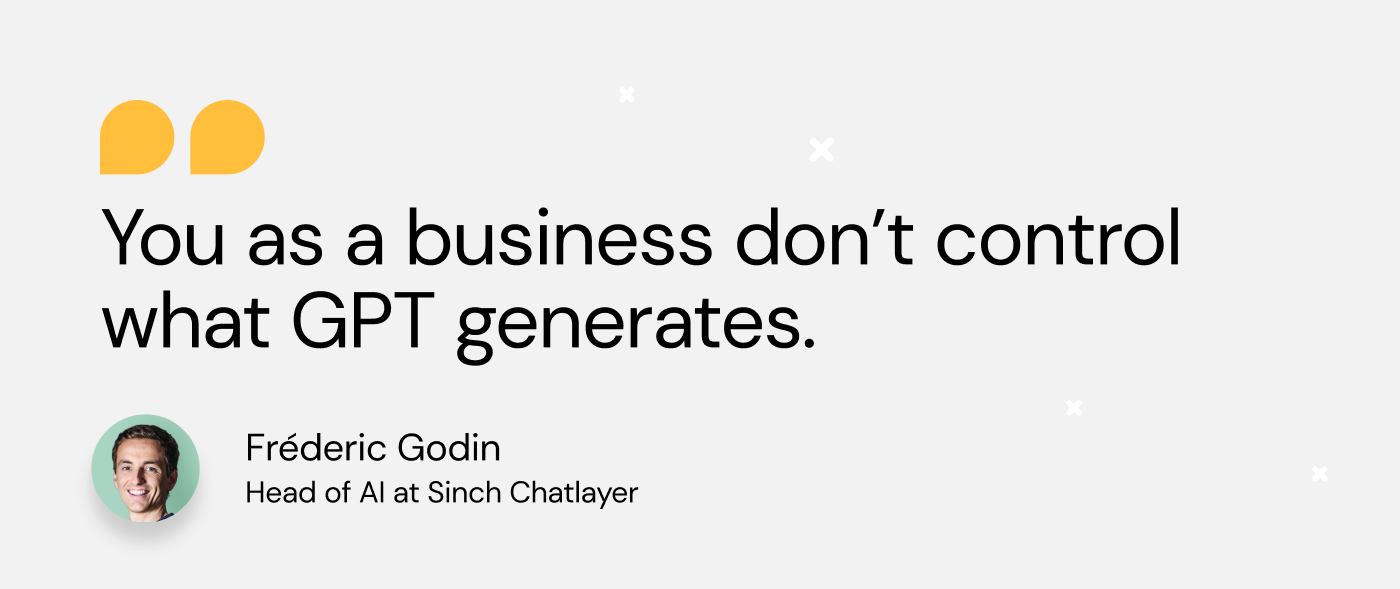
As the technology improves and becomes safer, Godin is convinced that customers will come to expect more interactive AI experiences from companies.
ChatGPT is not a scalable technology for businesses yet but is best used as an additional resource. If you want to see how the technology might benefit your business, Fréderic Godin recommends testing it first.
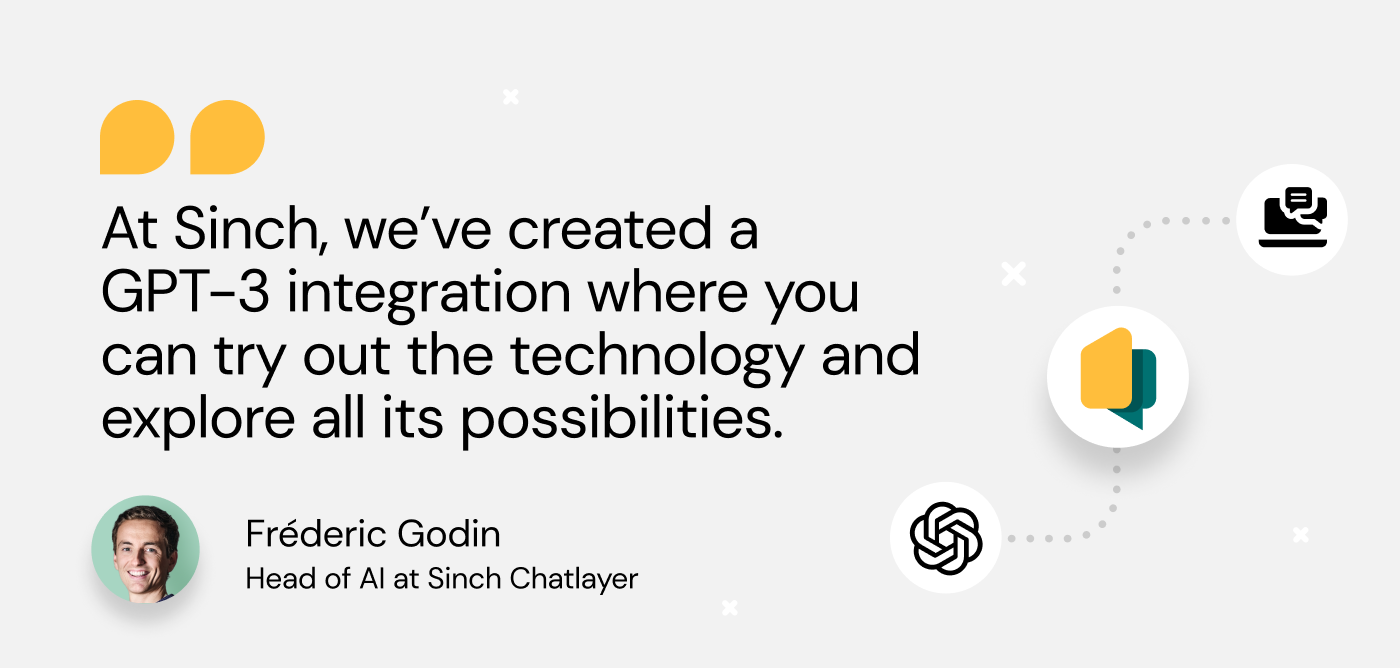
As the technology improves and becomes safer, Godin is convinced that customers will come to expect more interactive AI experiences from companies.
